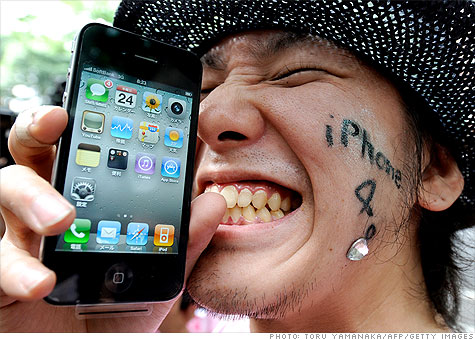As many of you know, I have never been able to actually use my cell phone in my apartment. This has been an extremely annoying experience, but I had hope over a year ago when AT&T said they were going to offer microcell service. For those that don’t know, a microcell is a box that plugs into your home internet connection and transmits cellular service in your house. The theory is great, and initially, I had very high hopes. Then came the AT&T caveats (of course I expected these….) The first issue is that the microcell does not provide unlimited talk time. When you are connected to the microcell, it actually counts against your monthly allotment of talk time. This is annoying as I am providing the service (at least partially). Of course, AT&T offers an unlimited talk time on the cell for an extra $20 per month. This is WAY too high for the amount of time I am home and talk on the phone. Most of the time I am home is at night or on the weekends, so I decided immediately to bypassed this option when the microcell became available in New York City.
As of the first week of June 2010, the microcell is officially available in NYC. I made my way to AT&T and bought one for $150 plus tax. Afterwards, I went home, and plugged the microcell into my router. After following the directions, and waiting about 45 minutes, the microcell was ready to use. I looked at my iphone, and didn’t notice any change. I tried to make a phone call, and was immediately greeted with the typical call failed sound. I decided to restart my phone. That did the trick — the phone was officially connected to the microcell!!! I made a call and it worked perfectly. I sent a SMS from Aki’s phone to mine and it was received!!! This was officially new territory!!
Then about 30 minutes later, I realized one of the major limitations of the microcell. The box REQUIRES you to have a GPS signal so that the e-911 service works. I can understand this, but the GPS signal at apartment is very intermittent. The box was dis- and re-connecting quite a bit. I am not sure why this is, but I think it has something to do with my Linksys WRT54GL router. This router has worked well for years, but lately I noticed it looses the signal more often than it used to. To remedy this, I ordered a new router and will write more about this later. Anyway, this GPS/router issue has made the microcell less than usable. The problem is that the microcell doesn’t readily connect if it loses the ethernet or GPS signal. While the microcell is looking for the signals, the phones dont work. Once it finds the signals the phones work again (most of the time).
Anyway, to close this post, I will say this — the microcell works well when it works. I have 30 days from purchase to decide if it works for me well enough to warrant the $150. The new router will be here this week, and I will see how it works. Until then here are some pics of the router.







